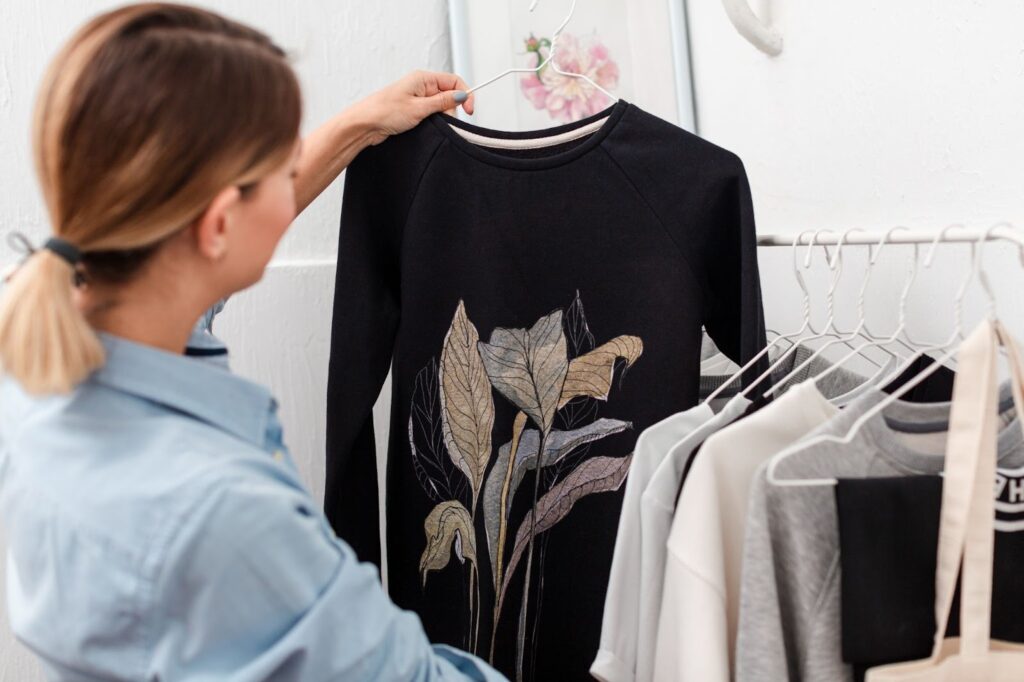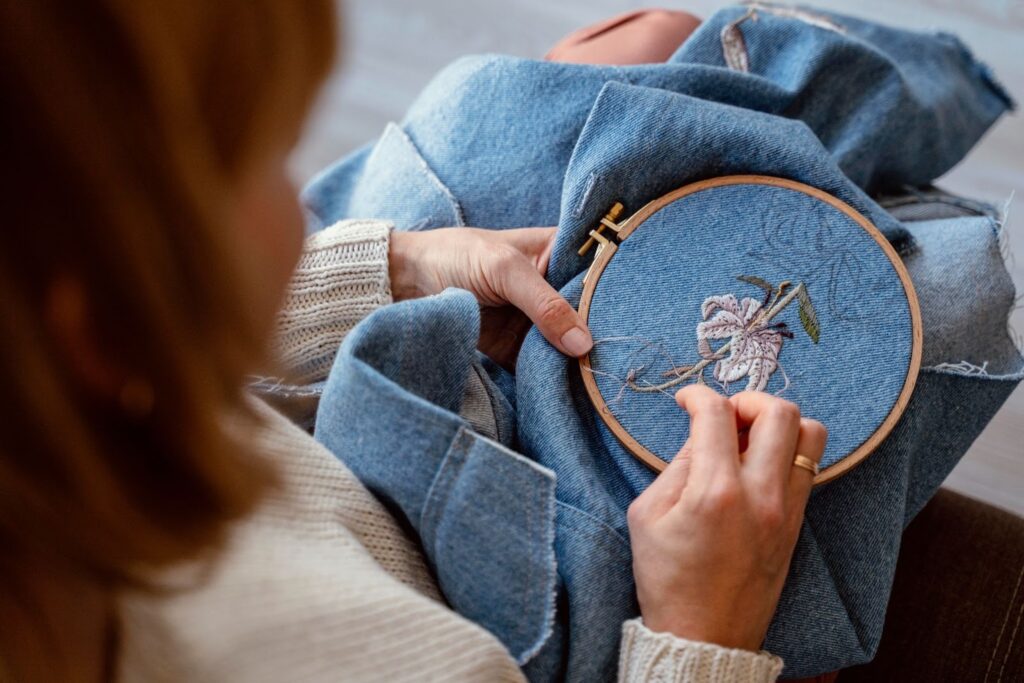Level Up Your Look: Personalizing Plain Items with HTV or Embroidery
Want to turn a plain t-shirt, tote bag, or jacket into a custom piece that screams “you”? Customization is fun, accessible, and a fantastic way to express your creativity. The two most popular methods for personalizing fabric items at home are using Heat Transfer Vinyl (HTV) and Embroidery. Both offer distinct looks and require different approaches.
Method 1: The Modern & Bold Look – Heat Transfer Vinyl (HTV)
HTV is a specialty vinyl that permanently bonds to fabric using heat. It’s ideal for producing sharp, bold designs, text, and logos.

How HTV Works
- Design Creation: You design your design using software (such as Cricut Design Space or Silhouette Studio). Note that all designs have to be mirrored (flipped) prior to cutting.
- Cutting: A cutting machine (such as a Cricut, Silhouette, or Brother ScanNCut) cuts the design into the vinyl with precision.
- Weeding: You pull away (or “weed”) the extra vinyl using a small tool, leaving behind your end design on a clear carrier sheet.
- Heat Application: You put the design on the fabric, cover it with a protective sheet, and heat and pressure apply with a heat press or home iron. The adhesive is melted by the heat and attaches the vinyl to the fabric fibers.
Method 2: The Classic & Textured Look – Embroidery
Embroidery employs thread to make textured, raised designs on fabric. It provides a high-end, sturdy, and timeless finish that has a luxurious feel.

How Embroidery Works
- Design & Hooping: You place the fabric in a special hoop to hold it tight. When using a machine, the design is digitized and placed into the machine.
- Stitching (Machine): An embroidery machine will automatically stitch the design in multiple colors and hundreds of threads according to the digitized route.
- Stitching (Hand): You work by hand with a needle and thread to carry out stitches (such as running stitch, satin stitch, or French knots) based on a pattern.
- Stabilizer: Behind the fabric, you can use a backing material known as a stabilizer to prevent it from puckering and to keep the stitches flat.


